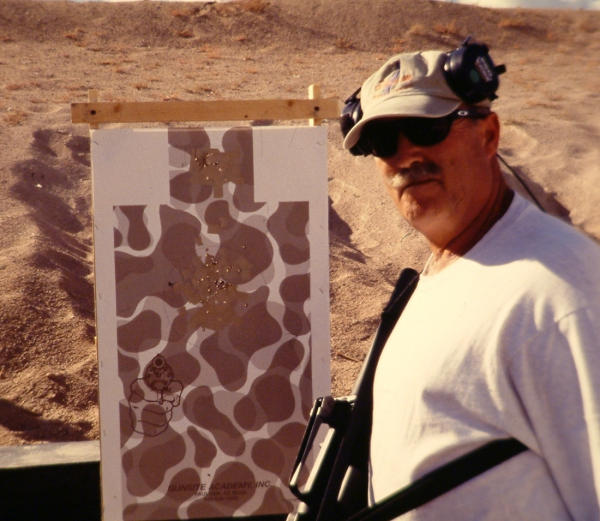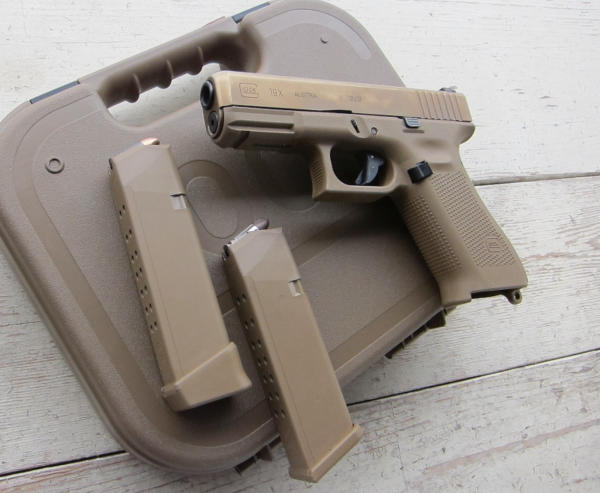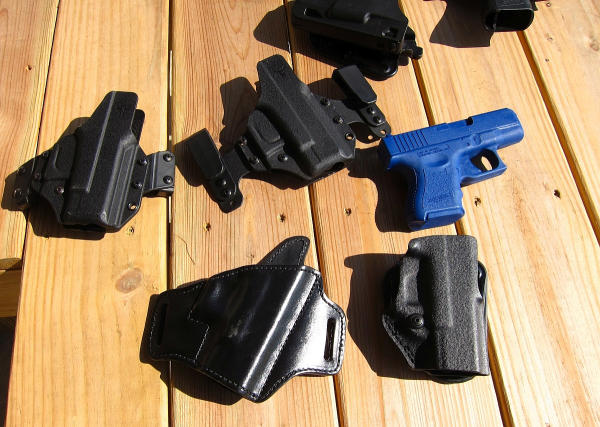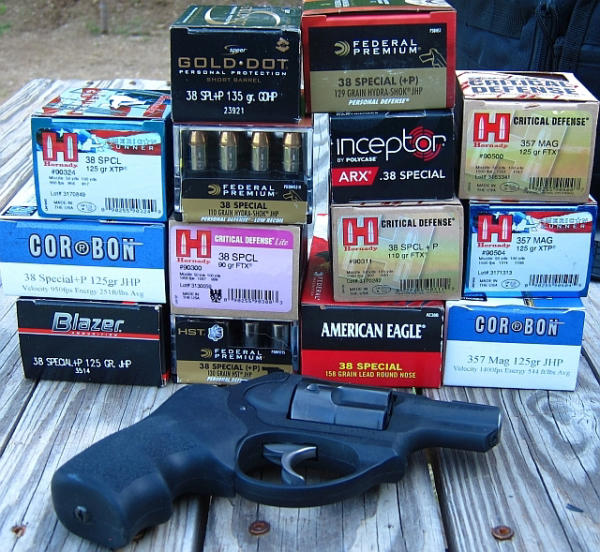Editor’s Note: Today’s guest feature is submitted by Greg Moats, industry insider, and certified curmudgeon.
One of the perquisites of age is the natural cataloging of knowledge and experiences with which to compare things. Conservatives call this “discernment,” liberals call it “profiling.”
To those of us that were children during the 50’s and 60’s, our source of available gun knowledge was either a mentor, the cinema or a relatively narrow niche of gun writers.
Cinematic marksmanship in those days was often obtusely silly. I doubt that even the most gullible kid among us believed that Gene or Roy could shoot the gun out of the hand of a bad guy at 50 yards with unaimed fire from the back of a galloping horse. Conversely, our mentors were usually fathers, uncles or cousins that had fought in WWII. They may not have been great marksmen, and while their ability may have been in doubt their credibility was never questioned. That left the gunwriters of the day as the sole sacrosanct source of knowledge concerning the pursuit of firearms.
Writers developed a following based upon how closely their teaching paralleled the experience of the reader, or how clever a wordsmith they were. Either way, “camps” were created and disputes were well known. Discussions between the Keith vs. O’Connor followers, the Jordan vs. Cooper camps and Askins vs. just about everybody developed more heat than light, but their opinions carried the weight of a Papal edict with their fans. As the fervor of the arguments built, so did the dogmatism from the scribes as well as the readers.
The internet has exacerbated things by giving a broad audience and relative anonymity to people that would have neither the presence of mind nor the courage to be dogmatic in person. Seemingly innocuous subjects can become amazingly enflamed; one thread I followed ended by two participants offering to meet for a fist fight over what choke to use for late season pheasants!

Since I’m looking for neither intellectual aerobic exercise nor a cyber war of words, when I see someone waxing dogmatic on the following subjects, I (as my friend Ken Hackathorn says) just push the “delete” button.
1. Anything that has to do with shotgun choke. Chokes alter patterns in increments of inches. Targets are missed in increments of feet. The effect that choke, bore diameter, forcing cone length, shot size and quantity and velocity have on patterning, is the mystic-dark-art of shooting. Every gun, choke and cartridge is a law unto itself. It lends itself to dogmatism only to the unenlightened.

2. The merits of a low bore axis. Two cyber-experts that I read recently were debating the merits of the Sig 320 vs. the Glock 19. The SIGaphobejust couldn’t adapt to the 320‘s higher bore axis which supposedly results in greater muzzle rise. According to him, recovery on target between shots lengthened his “splits” to unacceptable levels. Apparently Bruce Gray and Max Michel haven’t gotten the word. Is the phenomena real? Probably. Does it make a difference? Unless the bore axis is dramatically lower, such as the Mateba or Chiappa Rhino revolvers which launch their projectiles out of the bottom of the cylinder, the difference that you feel in muzzle rise is objectively irrelevant. If the difference bothers you significantly, you’ve fallen into the category of what Col. Cooper labeled “preoccupation with inconsequential increments.” Spend a couple of range sessions concentrating on tightening your grip, shoot a few hundred rounds and you’ll realize that the low bore axis benefits are theoretical in the real world.
3. Debates over grip angles. One of the main criticisms of Glocks has been that they don’t point like 1911s. Ok, so what? Neither do J-frame Smiths nor Single Action Armys. Jerry Miculek seems to do a pretty good job of altering between revolvers, 1911‘s and striker fired guns. Realize that “natural point of aim,” like the term “muscle memory,” are illusory terms to explain physical phenomena. For most people “natural” means “comfortable.” Comfortable positions alter with changes in things like muscle mass, injuries, tendon and joint trauma and these are often (usually) the result of repeated behaviors and of course age. I recently had rotator cuff surgery. My “natural point of aim” changed almost daily with physical therapy. “Pointability” is as personal as eye color and blanket statements reveal a lack of understanding. To say that some guns point better than others is akin to saying that blue eyed people are smarter than brown eyed people.

4. Holster opinions. Many people use facts like a drunk uses a lamp post, for support instead of illumination. “My mind’s make up, don’t confuse me with the data,” applies across the spectrum of firearms knowledge, but is central to many holster discussions. Bring up the virtue of kydex vs. leather, muzzle angle, retention devices, IWB vs. OWB, small-of-back vs. 4 o’clock vs. 3 o’clock carry and the current biggie, “appendix carry” and you’re guaranteed to have opened a can of worms. My personal opinion (don’t confuse me with the data, thank you) is that Bruce Nelson is the greatest holster designer in the history of tanned leather. I have to remind myself that the original “Summer Special” was designed and worn by him as an AIWB holster. Being built more like a sumo wrestler than a ballet dancer, I have no use for an appendix carry, but that’s just me. Every body is different and what works for one will be unserviceable for another. To argue that there is an objective “best” of any of the previously listed issues, shows a lack of insight.

5. Magazine capacity arguments. Discussions about how much ammo you’ll need in a “typical” armed encounter become ridiculous in quick order. “The only time you can have too much ammunition is if you’re on fire or underwater,” along with “No one in a gunfight ever wishes that they had less ammo,” are cliches that wear thin. “Probably,” “usually,” “typically,” “generally,” “almost always,” “as a rule,” “frequently” and “often” are words that circumvent statistical probability. In spite of what the FBI Uniform Crime Report statistics say there’s no such thing a “typical” armed encounter. In today’s world you’re not going to know who your adversary will be or how, when and where you’ll encounter them. “What if” games offer infinite options and quickly become intellectually dishonest, however it’s objectively true that 8 good shots are more effective than 17 bad shots. How well you shoot is more important than how much you shoot. Feel free to disagree with that, but it’s not worth arguing about.
There are other subjects of controversy that fall into this category. They lend themselves to blanket dogmatism by dilettantes, posers and those that just don’t understand the issues. As Hackathorn suggests, just push the delete button.
Greg Moats was one of the original IPSC Section Coordinators appointed by Jeff Cooper shortly after its inception at the Columbia Conference. In the early 1980’s, he worked briefly for Bianchi Gunleather and wrote for American Handgunner and Guns. He served as a reserve police officer in a firearms training role and was a Marine Corps Infantry Officer in the mid-1970’s. He claims neither snake-eater nor Serpico status but is a self-proclaimed “training junkie.”